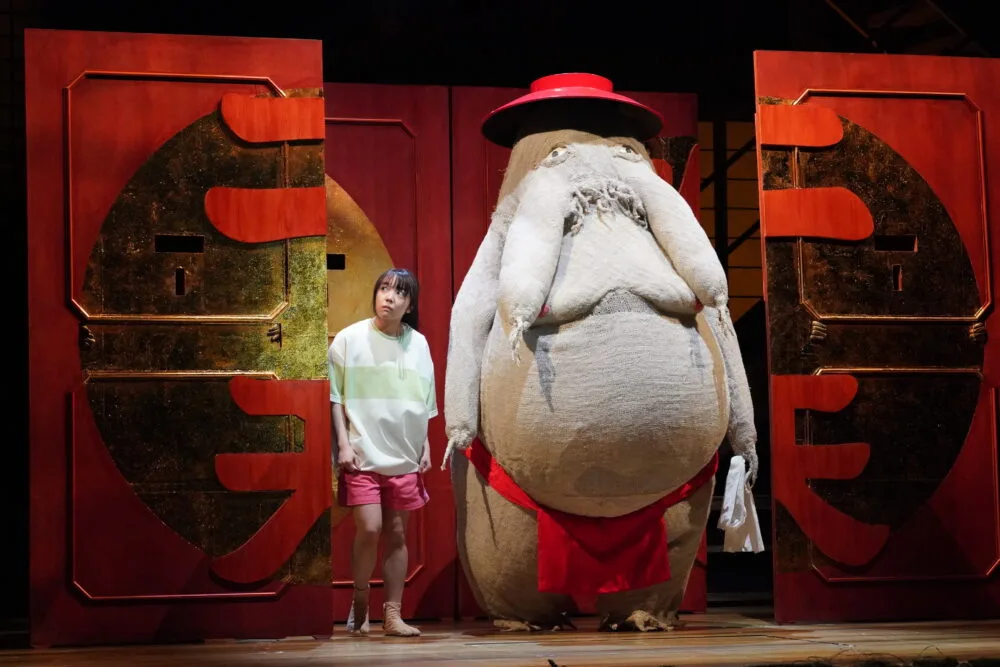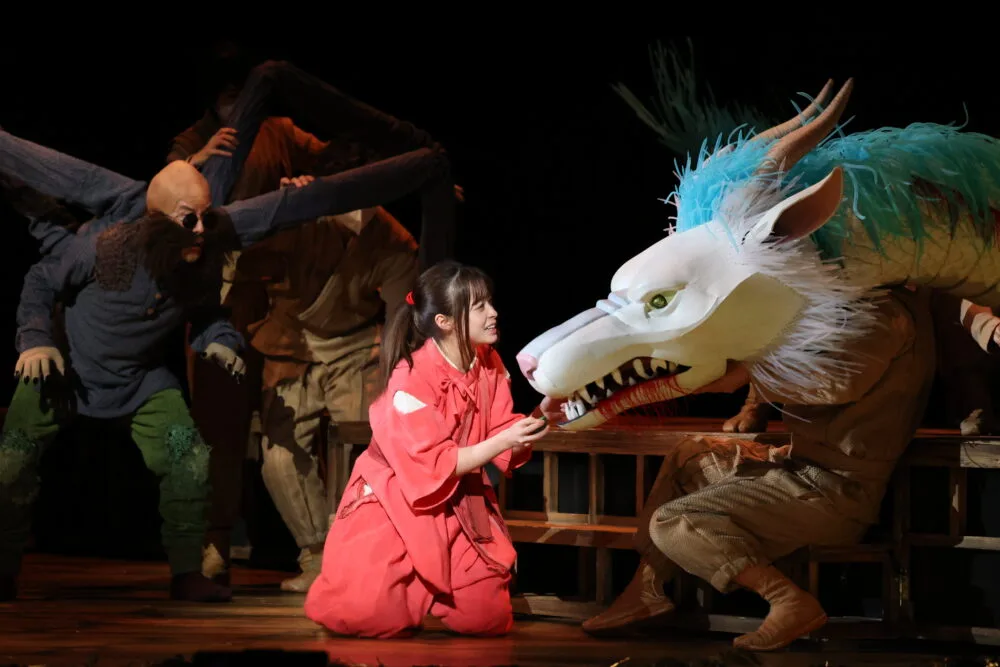|
Getting your Trinity Audio player ready...
|
In April and May, U.S. audiences are treated to the filmed version of John Caird’s acclaimed theatrical adaptation of Hayao Miyazaki’s Spirited Away. Caird, the Tony Award-winning director of Les Misérables and Nicholas Nickleby, talked about his first adaptation of an animated film to the stage in a recent interview conducted over Zoom.
Caird began the interview by addressing the fact that Miyazaki himself was not involved in the production.

“I offered him the chance to be involved, but he wanted to finish making How Do You Live, and had no creative time left for anything else,” the director explains. “I was very grateful that he trusted me to get on with it. I had a wonderful meeting with him where he gave me permission to do it. We talked a lot about the movie and how one would approach the difficulties in it, in terms of solving them theatrically.”
Spirited Away: Live on Stage opened on March 2, 2022 to rave reviews. But it was definitely not Caird’s first success in Japan. “I’ve been working there a long time; I’m deeply involved in Japanese theatrical culture,” he says. “My connection with Japanese theater started when I did Les Miz in Tokyo in 1987. Obviously, Miyazaki’s work is very, very different from the European tradition of literature and iconography. But I’m especially interested in the connection between traditional theater forms like noh and kabuki on the one hand, and sumo on the other, which are sort of the embedded in the film.”
Caird worked with his production team to provide visual links between traditional Japanese theater and Miyazaki’s vision. “Designer Jon Bausor made Yubaba’s bathhouse a noh stage, with the hanamichi (a runway used for entrances and exits) coming off it,” he explains. “It’s basically a model of a noh theater that revolves all through the evening. He played to the greatest strengths of Japanese theater: You never feel you’re outside the world of Japanese culture when you’re on that set.”
Although Chihiro, the heroine of Spirited Away, is human, many of the other characters in the film are not: The kami (Shinto nature gods) who come to the bathhouse to be cleansed of human pollution; Kaonashi, the mysterious “No Face;” the bizarre Radish God; Kamaji, the avuncular six-armed figure who presides over the boiler room. Once again, Caird chose to combine Eastern and Western traditions, mixing Western-style puppetry with bunraku.
“Toby Olié, my puppet master, designed the puppets. Like all puppeteers, he is influenced in one way or another by bunraku, but he’s also influenced by a lot of other puppetry traditions,” Caird explains. “We don’t try to hide or black out the puppeteers. When you’ve got a character like Kaonashi, who has to be the one black void character, you can’t have other puppeteers going around in black suits pretending they’re not there because they would suddenly become much too interesting.”
“John dreamt up the idea that the puppeteers would all be wearing khaki-colored costumes that blend into the color of the set,” he continues. “They’re dressed in khaki, but they’re completely visible to the audience. I’ve come to feel that the more you show the audience how you’re doing something, the more magical it becomes. As soon as you fly Chihiro on a wire, you’re challenging the audience to see how it’s done. When they start thinking about that, they’re not involved in the story. By opening your hands and saying, ‘It’s simple, this is how we’re doing it,’ it remains magical.”

When asked about his favorite characters in the show, Caird replies he’s fascinated by Kaonashi. Chihiro invites the solitary, mute figure to come into the bathhouse out of the rain. He’s grateful to her and attempts to repay her, stealing the wooden bath tokens that will help her complete her job. But he succumbs to the greed that pervades Yubaba’s realm, devouring all the food in sight, then engulfing the servers, like the personification of a black hole.
“Miyazaki told me he came on the character quite late in the creative process,” Caird recalls. “He invented Kaonashi to give a sort of creative focus to the center of the film, to give Chihiro a worthy antagonist. This creature who is behaving in such an appalling and selfish way is actually only doing it because he’s so lonely — that’s deeply affecting. Although he’s dangerous and destructive, he’s still redeemable. Zeniba takes him in at the end: You can imagine them happily sitting in her cottage.”

In 2001 interview, Miyazaki said, “I wanted the main character to be a typical girl in whom a 10-year-old could recognize herself. She shouldn’t be someone extraordinary, but an everyday, real person — even though this kind of character is more difficult to create. It wouldn’t be a story in which the character grows up, but a story in which she draws on something already inside her that is brought out by the particular circumstances.”
Unlike Kaonashi, Chihiro resists the grasping Yubaba’s influence. The gold the powerful river god leaves in gratitude and the gold Kaonashi produces don’t tempt her. As she works in the bathhouse, she discovers inner resources of strength, courage and love she didn’t know she possessed. She’s determined to rescue her parents and Haku, even it means enduring hard labor and putting herself in danger. The sulky child who entered the bathhouse emerges empowered and confident, ready for her life in a new home and a new school.
“Chihiro becomes the perfect heroine because she’s incorruptible,” Caird concluded. “As Kamaji says, it’s all about love. It’s how deeply you love the people you love: That’s your defense against corruption.”

Presented by GKIDS and Fathom Events as part of Ghibli Fest 2023, the filmed recordings of both casts from the original Imperial Theatre Tokyo performances of Spirited Away: Live on Stage will screen across North America on select dates (all times local):
- Sunday, April 23 at 4 p.m. (with Kanna Hashimoto as Chihiro)
- Tuesday, April 25 at 4 p.m. (with Kanna Hashimoto as Chihiro)
- Thursday, April 27 at 7 p.m. (with Mone Kamishiraishi as Chihiro)
- Tuesday, May 2 at 7 p.m. (with Mone Kamishiraishi as Chihiro)


















